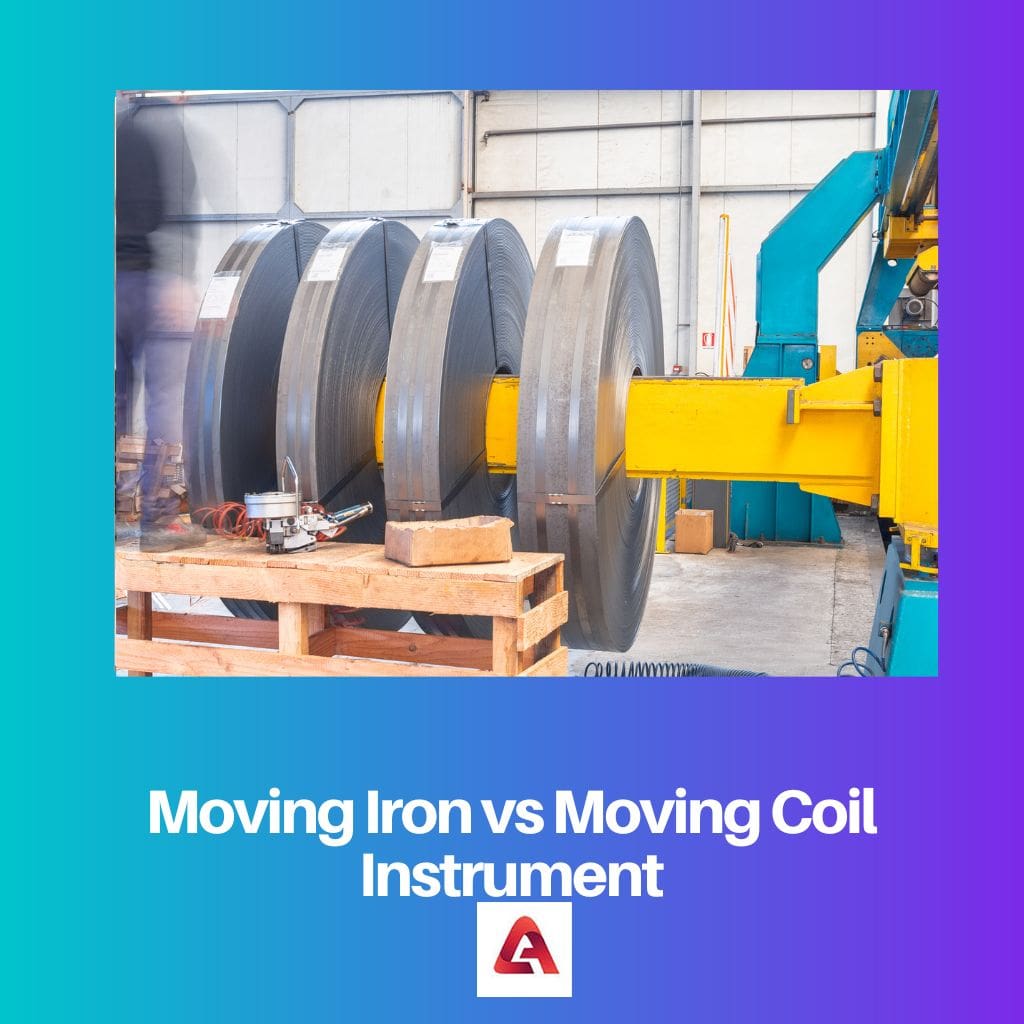Key Takeaways
- Moving Iron and Moving Coil are analog instruments that measure electrical current.
- Moving Iron instruments use a fixed coil and a movable iron vane, while Moving Coil instruments use a movable coil and a fixed magnet.
- Moving Iron instruments are used for measuring AC currents, while Moving Coil instruments are more suitable for measuring DC currents.

What is Moving Iron Instrument?
A moving iron instrument is an instrument used to measure current, voltage, and other electrical parameters. It uses a moveable iron core, which reacts to the magnetic field created by the measured voltage.
The moveable iron core is hovered between two coils and made to move in response to the magnetic force of the measured voltage. The core movement causes a pointer to move up and down a scale, thus delivering a visual signal of the measured current or voltage.
A moving iron instrument comprises three parts: an iron core, a pair of coils, and a pointer. The iron core is hovered between the two coils and moved in retort to the magnetic force of the measured current or voltage. The core movement causes a pointer to move up and down a scale, thus visually indicating the measured current or voltage. The scale can be either linear or angular, depending on the application.
Moving iron instruments are also used in medical applications, such as measuring electrical activity in the heart and power line monitoring. They measure the voltage and current in power lines to ensure they operate within safe limits.
What is Moving Coil Instrument?
A moving coil instrument is an electrical instrument used to measure or detect changes in an electrical signal. It works by the interaction of an electric current with a moving magnet or coil, in the physique of a coil of wire.
The device is based on the principle that a current-carrying conductor will experience a force when placed in a magnetic field. In a moving coil instrument, a coil of wire suspends between the poles of a magnet. When an electrical signal is applied to the coil, it will move in the magnetic field and generate a voltage across its terminals.
The voltage generated is proportional to the strength of the signal applied and detected with a suitable meter. The moving coil instrument measures various physical quantities, such as voltage, current, power, and frequency. They are also used to measure the impedance of a circuit, which is the ratio of the voltage across it to the voltage through it.
The moving coil instrument is operated in medical diagnostic equipment such as electrocardiographs and in industrial and scientific applications, such as measuring a motor’s current or an electric circuit’s voltage.
Difference Between Moving Iron Instrument and Moving Coil Instrument
- The soft iron component is a rotating element in the moving iron instrument. The coil is used as a revolving element in the moving coil instrument.
- The moving iron instrument has a non-uniform scale. In comparison, the moving coil instrument has a uniform sale.
- The moving iron instrument needs to be more accurate as analogized to the moving coil instrument.
- The moving iron instrument has no hysteresis loss. In the moving coil instrument, hysteresis loss occurs.
- The moving iron instrument’s deflection is proportional to the current. In disparity, a moving coil instrument’s deflection is proportional to the current’s square.
Comparison Between Moving Iron Instrument and Moving Coil Instrument
| Parameters of Comparison | Moving Iron Instrument | Moving Coil Instrument |
|---|---|---|
| Working Principle | Works on magnetism | It is similar to the working principle of DC Motor |
| Uses | Both AC and DC measurement | DC Measurement |
| Accuracy | Less | More |
| Damping | Air Friction Damping | Eddy Current Damping |
| Power Consumption | High | Low |
- IET Digital Library: Assessment of torque in clip-round moving-iron meters (theiet.org)
- PRODUCTION ENGINEERING MEASURE FOR METERS, TAUT BAND SUSPENSION, A-C MOVING IRON VANE PER SIGNAL CORPS REQUIREMENTS SCS-160 (dtic.mil)
